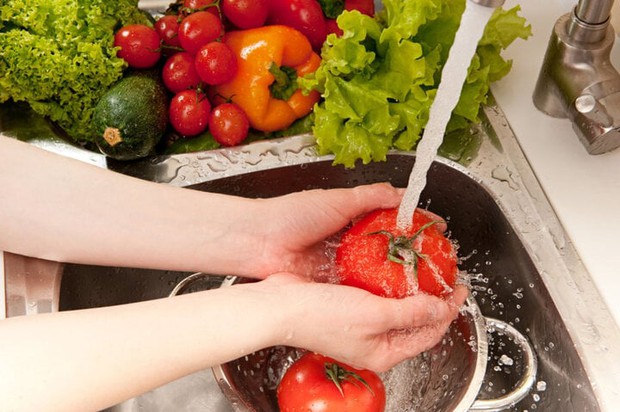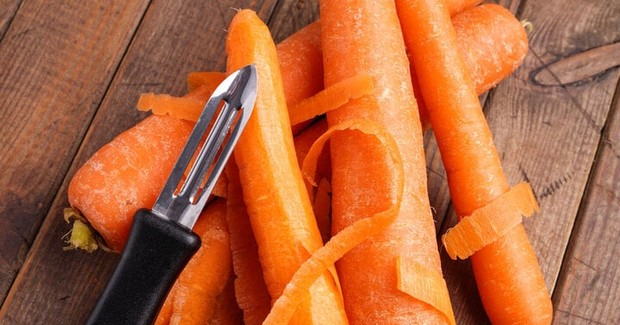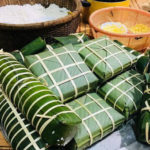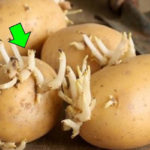The issue of pesticide residue in fruits and vegetables is always a concern for modern humans, as leafy greens – essential food, providing the most valuable nutrients – can become a major danger on every family’s dining table.
To ensure food safety, there are various methods to remove pesticides from fruits and vegetables, which many experts have shared.
Methods to remove pesticides from fruits and vegetables
Jin Jin, a nutritionist at the Clinical Nutrition Department, Peking University International Hospital, China, shares some ways to remove pesticides from fruits and vegetables as follows.
Soaking and washing with clean water
Washing is a basic method to remove dirt and other pesticides clinging to the surface of fruits and vegetables. After washing off the dirt on the surface, you soak the fruits and vegetables in clean water for at least 10 minutes. You can use a fruit and vegetable cleaner to enhance the ability to dissolve pesticides. After soaking, wash the fruits and vegetables under running water several times.

Soaking and washing with clean water is a basic method to remove dirt and other pesticides from fruits and vegetables. (Photo: Goodnet)
This method can be applied to leafy greens, such as spinach, cilantro, kale…
Soaking with alkaline solution
Wash off the surface dirt on fruits and vegetables, soak them in an alkaline solution for about 5-15 minutes, then rinse with clean water 3-5 times.
All types of fruits and vegetables can be applied using this method.

Peeling is an effective method to remove pesticides from fruits and vegetables. (Photo: Goodnet)
On the surface of fruits and vegetables, there is a relatively large amount of pesticides, so peeling is the most effective method to remove pesticides from fruits and vegetables.
All types of fruits and vegetables can be applied using this method: Apples, pears, kiwis, cucumbers, carrots, zucchinis, eggplants, beetroots…
Blanching with boiling water
Pesticides are easily degraded when exposed to high temperatures, so blanching fruits and vegetables with boiling water is very effective in removing pesticide residues. The major drawback of this method is that many types of fruits and vegetables will become wilted after being exposed to hot water.
The general procedure is to blanch the fruits and vegetables in boiling water for about 1-3 minutes, then scoop them out and rinse them off.
Let the fruits sit for a while before eating
For long-lasting fruits and vegetables, they can be left for several days before consumption. Oxygen in the air and compounds like enzymes in vegetables can react with pesticide residues, causing the pesticides to be destroyed, reducing the amount of pesticide residue and their toxicity.
This method is suitable for apples, kiwis, cucumbers, and other types of fruits and vegetables that are not easily spoiled.
8 Common Mistakes People Make with Cutting Boards
Are you using your cutting board correctly? Many Vietnamese households rely on cutting boards in their kitchen, but not everyone knows how to use them properly, especially when it comes to wooden cutting boards. Check out these 8 mistakes to avoid when using a cutting board to ensure both hygiene and safety for everyone in your family.
Is Refrigerated Leftovers Linked to an Increased Risk of Cancer?
Dr. Lam Van Man, Head of Research, Development and Technology Transfer Department of the Institute of Safety Food, has warned of the risk of food poisoning when reheating leftovers from the refrigerator. But what should we be aware of when it comes to the possibility of these leftovers causing cancer? Here, we explore what the experts have to say on the matter and offer some tips for safe eating.
Preserving Leftover Food from the Tet Holiday
With the beginning of the Lunar New Year, many households are stocking up on food to celebrate the festive occasion. While keeping food in the refrigerator is convenient, it can also be harmful to users if not done correctly. We have compiled a few tips to help ensure food remains fresh and safe to consume during Tet.






































